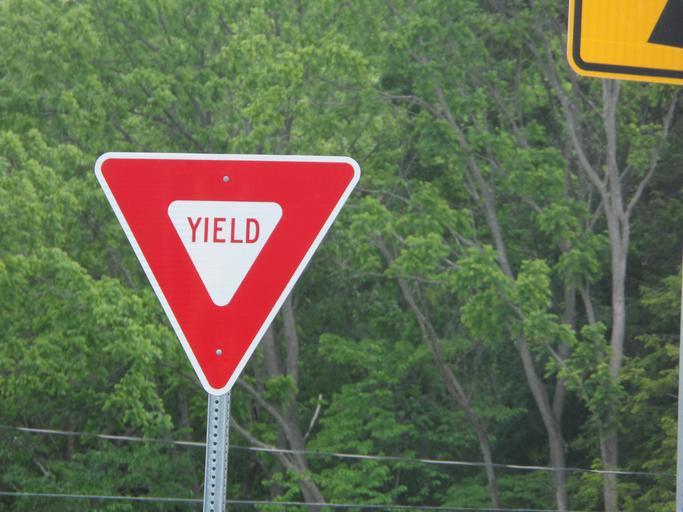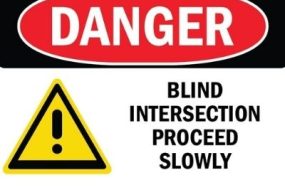
Yielding is important when driving on a public road, it doesn’t matter whether you have the right of way or not. Even if you don’t usually yield to others, there are some sets of people and vehicles you must by law or custom yield to.
You should always yield to the following: funeral processions, public transit, and school buses.
What Does it Mean to Yield?
To yield can mean different things depending on the context in which it is being used. It could mean any of the following;
- To allow another person or car to go before you
- Succumbing to something or someone,
- Giving way to demands, etc.
Generally, one can say to yield means to give up or to give way to someone or something.
You Should Always Yield to the Following
You are mandated to always yield to the following:
- Pedestrians at stop signs
- Public transit
- School buses
- Funeral Processions
- Emergency vehicles e.g. police, ambulance, fire
- Motorcycles, bicycles, bicyclists
- Trains
- Yielding to people using a seeing-eye guide dog
- At a yield sign etc.
- Other vehicles in an intersection
Depending on the state, failure to yield to any of the aforementioned may attract a fine as the case may be.
For those preparing for their DMV written test, the answer is that you should always yield to the following: funeral processions, public transit, and school bus.
Reasons to Yield for the Following
Here are reasons why you should yield for a funeral procession, public transit, and school bus:
Funeral Processions
Funeral processions always have the right of way irrespective of the state, although most states do not necessarily have any laws regarding the funeral procession.
Yielding when you see a funeral procession is a sign of respect to the mourning family and indirectly telling them wherever you are going is not as important as what they are doing.
If you meet a funeral procession on your way and you don’t know what to do, you will be safest doing the following;
- Allow all cars in the funeral procession to pass before moving. Usually, cars in a procession will have the headlights on with a flag, and the last car in the procession should have two flags, which signifies the end of the procession.
- Resist the urge to pass after the lead car, wait for the entire procession to pass
- Do not for whatever reason cut in the middle of a funeral procession no matter how long it is.
It is important to stop for a funeral procession because it is tradition and the level of revere accorded, it is also a sign of respect for the deceased.
In some states, yielding to a funeral procession is not in the law, just a custom that people follow, while in others it is part of the law.
Although other vehicles are expected to yield to a funeral procession, the funeral procession is not exempted from following traffic rules alongside other vehicles.
If the lead car however passes before the light turns red, all other cars in the procession may run red lights.
Public Transit
One reason why other road users should yield to public transit is to improve the flow, reliability, and efficiency of transit.
In some states, there are legislations designed that make it compulsory for other vehicles to yield.
For this legislation to be effective, some public transits have a small sign saying ‘Yield to Transit Bus’, ‘Please Yield’, or a flashing yellow light on its rear.
When a public transit intends to re-enter traffic, its left turn signal is activated, this serves as a signal to vehicles coming behind to stop or slow down for it to rejoin the flow of traffic.
An exception to this case will be if it is not safe to re-join traffic at the time or if the vehicle coming behind is an emergency vehicle.
Despite the signs on public transit for other vehicles to yield, some vehicles do not yield either because of ignorance or because they choose to ignore the navigational sign.
Whatever the case may be, not yielding may come with some consequences if the driver gets caught by traffic officers or policemen.
This privilege is given to public transits because of the many stops they have and the difficulty that may be encountered in trying to re-enter traffic. It also prevents them from colliding or crashing into other vehicles.
School Buses
Of all the groups of people to yield to, school buses are also important because they are carrying children.
Regulations to stop to school buses are put in place for the safety of these children because if not properly guided they can just walk into the street.
You don’t necessarily have to stop every time you see school buses passing but once you notice that it has stopped, or the stop sign is out, and school children are getting on or off, you should yield.
Due to the big sizes of school buses, a driver may not know whether children are really getting on or off but if any of this is happening a stop sign may be extended from the side of the bus or the lights start flashing.
This flashing light comes on 500 feet before the bus stops, this will give vehicles coming behind ample time to adjust.
School buses like public transit make frequent stops at different bus stops, so you will have to be patient and continue yielding as you go. You could get ticketed if you fail to yield to the school bus stop sign.
Yielding at an Intersection
- If you arrived at the same time at a controlled intersection with signs such as a four-way stop, ensure to yield to the driver on the right.
- Always yield to any driver already at or in an intersection.
- Once you approach an intersection with a yield sign, slow down and yield to traffic on the connecting roadway even if this requires a full stop.
- You should always yield to oncoming traffic and all people at a crosswalk when making a left turn at an intersection.
What Happens if you Don’t Yield?
If you fail to yield when you should, you will be penalized according to the law, for states that have legislation designed for yielding, those that do not yield will be punished by the books.
Depending on the circumstances surrounding the vehicle not yielding, fines may be paid and court appearances where applicable.
The severity of the situation will determine the extent of the penalty and punishment. There could be jail times too especially if you fail to yield to pedestrians at a crosswalk.
Conclusion
If you are confused and don’t know the set of people you should by law yield to, you can always check the laws of your state of residence and you can as well do what seems right to you. Checking the laws will ensure you are acting within them and not violating them.









